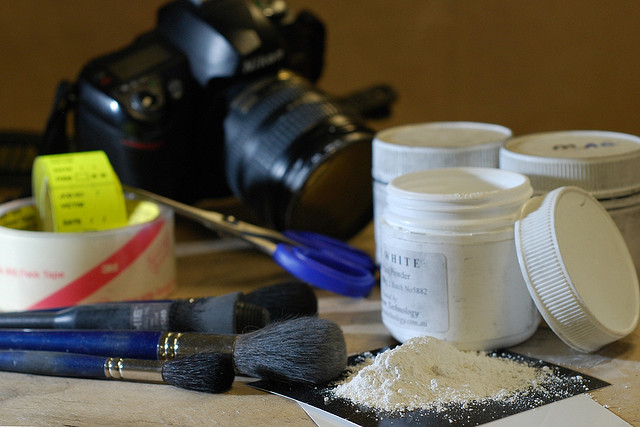READ: Collecting and Packaging Evidence
Collecting and Packaging Evidence
Collecting and Packaging Evidence
Once evidence has been located and completely documented it will need to be taken to a lab for further testing or stored in a secure evidence locker. Evidence is usually submitted to the lab in person or through the mail. Certain types of evidence such as explosives evidence and other hazardous evidence cannot be mailed. Depending on the type of evidence the entire piece of evidence may be collected, or a just a sample might be collected. There are many different types of evidence that investigators encounter in a crime scene and each type of evidence needs to be packaged correctly so that it does not become damaged while being transported or stored. The packaging of specific types of evidence will be covered as we discuss each type in the course, but we will learn about general materials and procedures used for packaging evidence here.

Investigators bring packaging materials with them to the crime scene. Usually the necessary materials are compiled into a kit and carried in the back of a vehicle or in a larger crime scene investigation truck. It is important to have all of the materials needed for packaging different types of evidence on hand so that evidence does not become damaged. Some necessary items include paper and plastic bags, plastic and metal containers, and paper envelopes to store evidence in. Tape, forceps (like tweezers), and swabs are needed for picking up smaller pieces of evidence or taking samples. It is also a good idea to bring flashlights and magnifying glasses to the scene to make finding and packaging evidence easier.
Other special equipment is used to collect certain types of evidence. Powders and brushes for dusting fingerprints are often necessary. Materials for making casts of tire or shoe impressions may be needed. There are also special lights and filters that can be used to make evidence that is hard to see more visible. Sometimes it may be necessary to complete chemical testing on substances found at the scene. Materials for these tests should also be brought to the scene.

An evidence collection kit should also contain personal safety equipment. Gloves, shoe covers, hair nets, lab coats, face masks, full body suits, goggles, safety glasses, and antiseptic washes should all be included in any evidence collection kit. Safety equipment protects both the investigators and the evidence. The investigators are protected from touching hazardous chemicals or contracting an infectious disease at the scene. The evidence and the scene are protected from possible contamination that could come from the investigators hands, clothes, or hair.

Each piece of evidence needs to be properly labeled. Evidence tags, biohazard labels, pens, and markers are all useful to have in order to correctly label evidence. Evidence needs to be labeled with information such as the case number, the date and time it was collected, the location, and the name of the person that collected the evidence. The label should also include a description of the evidence that is placed in the container. The evidence should also be labeled with the item number. The item number is the number on the evidence marker that was placed next to each piece of evidence. If the evidence is a sample of body fluid, or a substance that could contain harmful viruses or bacteria, it should be marked as a biohazard.